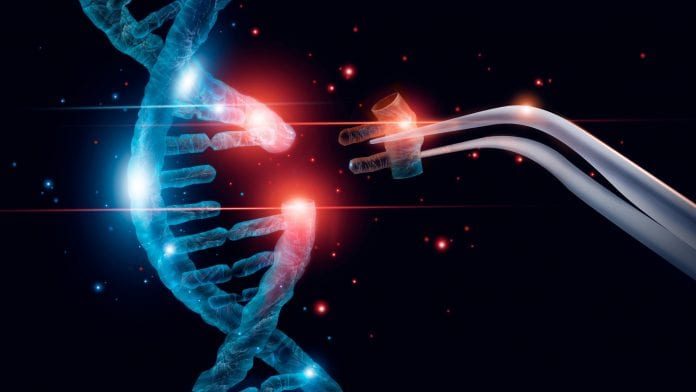
For the first time, scientists have shown how gene editing techniques could be used as therapy for the rare neurodevelopmental disorder – Angelman syndrome.
Babies born with a faulty maternal copy of the UBE3A gene will develop Angelman syndrome, which currently has no cure, and has only limited treatments. Now, scientists have shown that gene editing and gene therapy techniques can be used to restore the UBE3A in human neuron cultures and treat deficits in an animal model of Angelman syndrome.
The study, led by senior author Mark Zylka, PhD, Director of the UNC Neuroscience Center and W.R. Kenan, Jr. Distinguished Professor of Cell Biology and Physiology, has been published in the journal Nature, and lays important groundwork for a long-lasting treatment or cure for this debilitating disease, as well as a therapeutic path forward for other single-gene disorders.
Using CRISPR technology
Angelman syndrome is caused by a deletion or mutation of the maternal copy of the gene that encodes the ubiquitin protein ligase E3A (UBE3A). The paternal copy of UBE3A is typically silenced in neurons, so the loss of maternal UBE3A results in a complete absence of the UBE3A enzyme in most areas of the brain. This enzyme targets proteins for degradation, a vital process that maintains normal function of brain cells.
“When that process malfunctions, the result is Angelman syndrome, a brain disorder with symptoms that include severe intellectual and developmental disabilities, seizures, and problems with speech, balance, movement, and sleep.
“Our study shows how multiple symptoms associated with Angelman syndrome could be treated with a CRISPR-Cas9 gene therapy,” Zylka said. “And we are now pursuing this with help of clinicians at UNC-Chapel Hill. Turning on the paternal copy of UBE3A is an attractive therapeutic strategy because it could reverse the underlying molecular deficiency of the disease.”
However, the paternal gene is silenced by a long strand of RNA, produced in the antisense orientation to UBE3A, which blocks production of the enzyme from the paternal copy of the gene.
Members of the research team set out to devise a way to use CRISPR-Cas9 to restore the UBE3A enzyme to normal levels by disrupting the antisense RNA.
The team used an adeno-associated virus (AAV) gene therapy to deliver the Cas9 protein throughout the brain of embryonic mice that model Angelman syndrome. Because UBE3A is essential for normal brain development, early treatment is crucial.
The researchers found that embryonic and early postnatal treatment rescued physical and behavioural phenotypes found in Angelman syndrome patients, finding that a single neonatal injection of AAV unsilenced paternal UBE3A for at least 17 months. The data suggests this effect is likely to be permanent, and the researchers also demonstrated that this approach was effective in human neurons in culture.
Zylka said: “No other treatments currently being pursued for Angelman syndrome last this long, nor do they treat as many symptoms. I am confident others will eventually recognise the advantages of detecting the mutation that causes Angelman syndrome prenatally and treating shortly thereafter.”
The researchers are now focussing on refining an approach that will be suitable for use in humans.
Identifying Angelman syndrome
Using brain imaging and behaviour observations, the Zylka lab will now collaborate with researchers at the Carolina Institute for Developmental Disabilities (CIDD) to identify symptoms in babies that have the genetic mutation that causes Angelman syndrome.
Zylka said: “The idea is to use genetic tests to identify babies that are likely to develop Angelman syndrome, treat prenatally or around the time of birth, and then use these early symptoms as endpoints to evaluate efficacy in a clinical trial.
“Our data and that of other groups clearly indicates that prenatal treatment has the potential to prevent Angelman syndrome from fully developing.”







